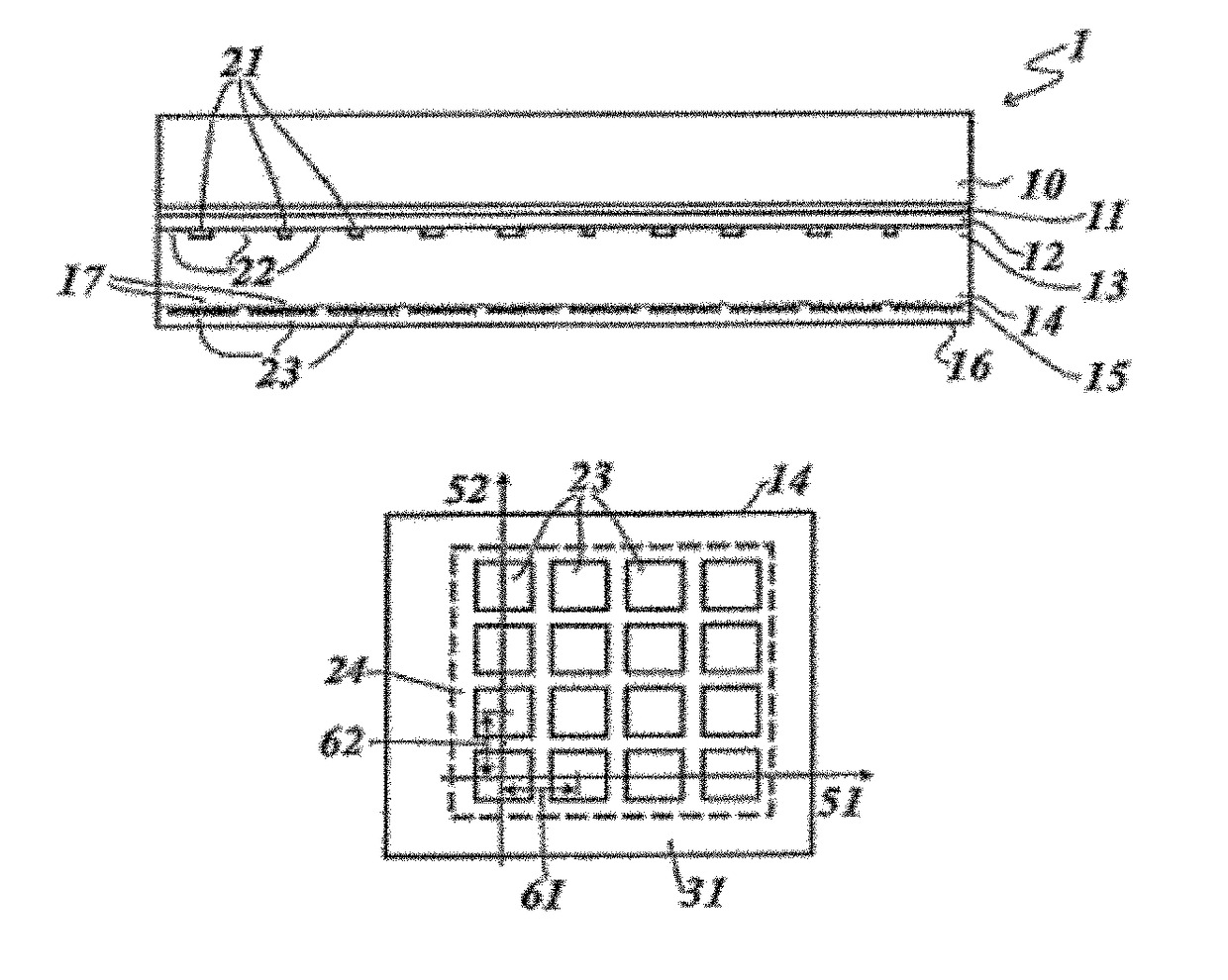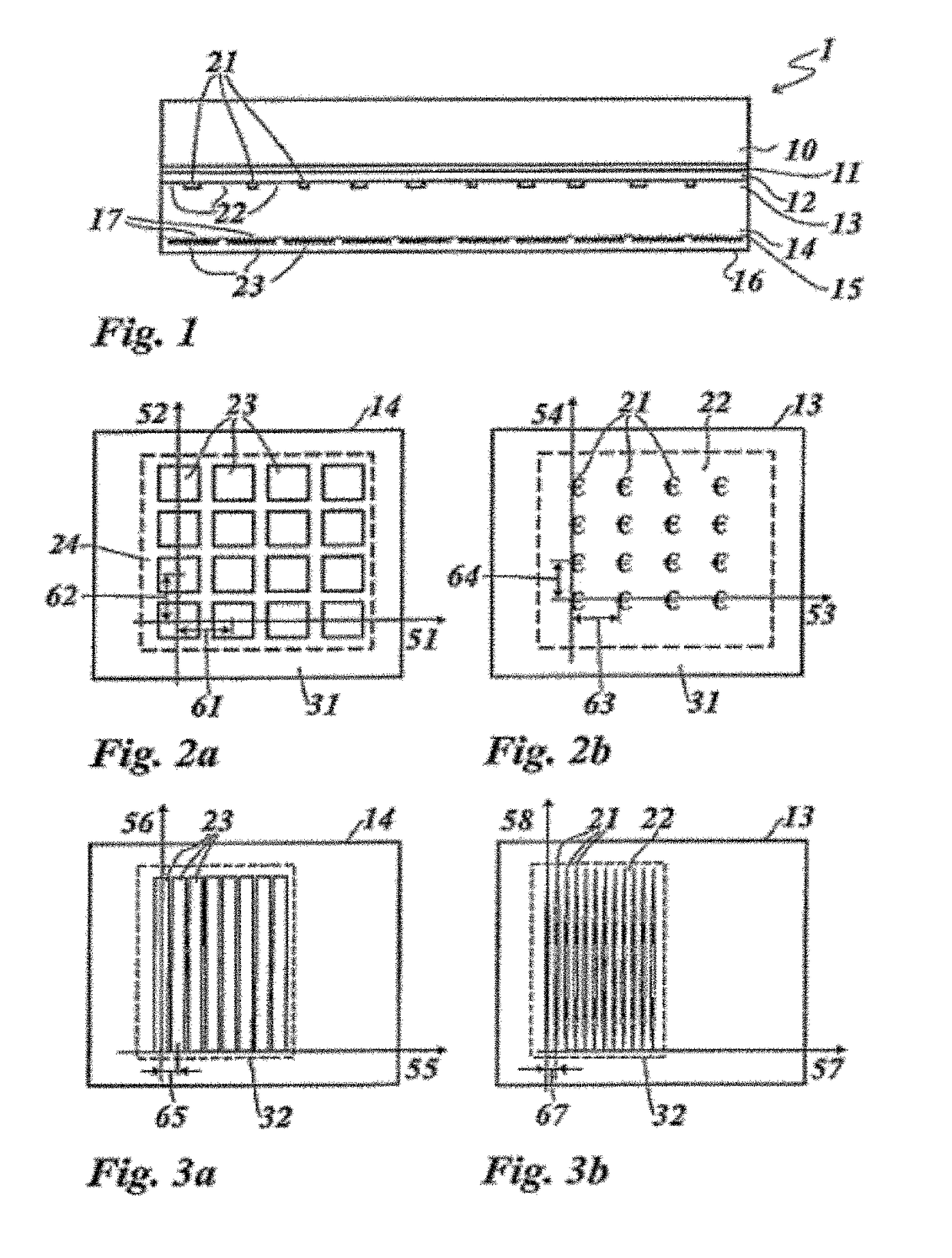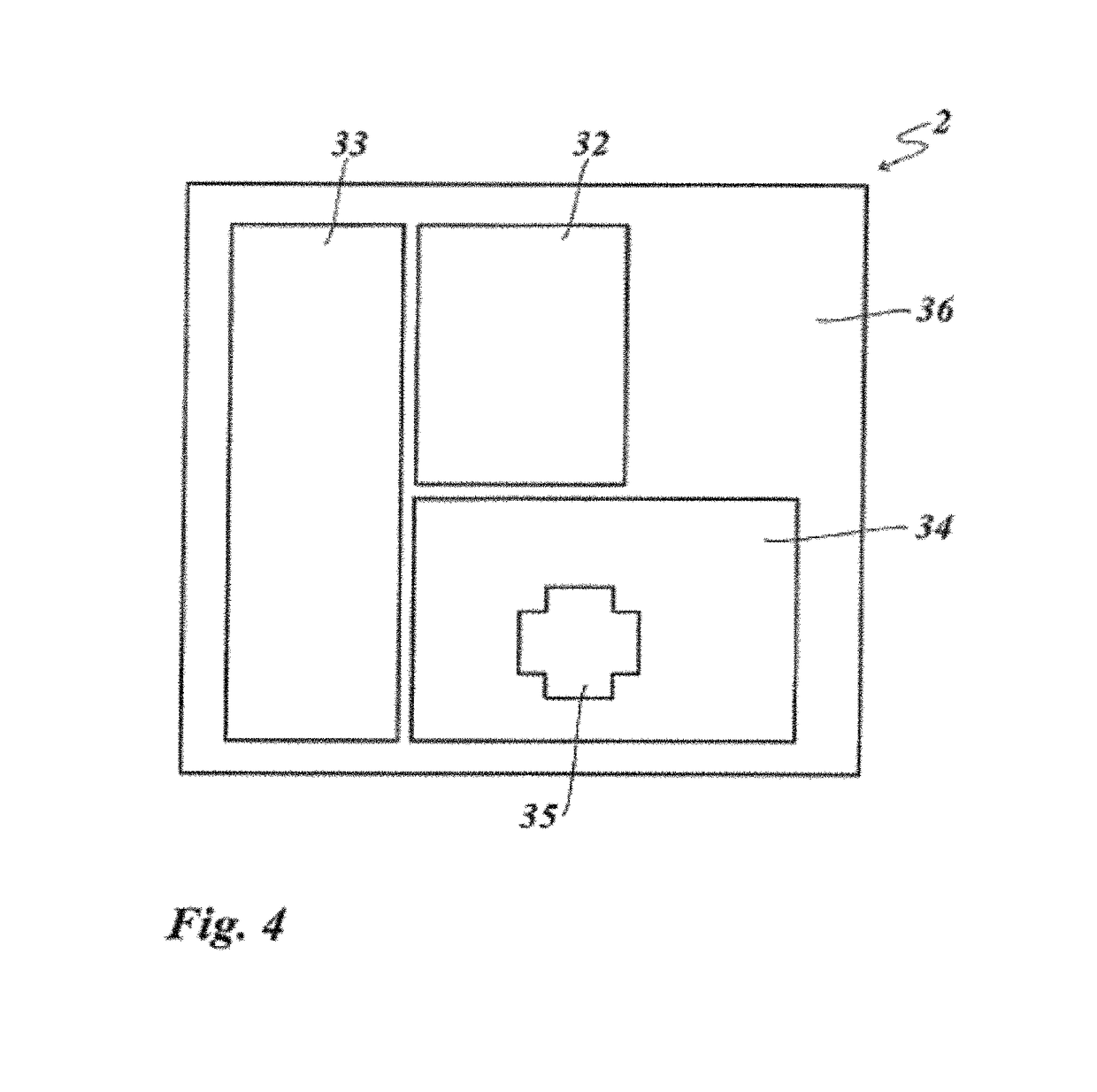Multi-layer body
a multi-layer body and body technology, applied in the field of multi-layer bodies, can solve the problems that security elements cannot be copied either by holographic copying techniques or mechanical impression of surface structures, and achieve the effect of new optically variable effects
- Summary
- Abstract
- Description
- Claims
- Application Information
AI Technical Summary
Benefits of technology
Problems solved by technology
Method used
Image
Examples
Embodiment Construction
[0098]FIG. 1 shows a schematic sectional illustration of a multi-layer body 1, which is a transfer film.
[0099]The multi-layer body 1 has a carrier film 10, a release layer 11, a protective lacquer layer 12, a partial metal layer 13, a replication lacquer layer 14, a metal layer 15 and an adhesive layer 16.
[0100]The carrier film 10 consists of a plastic film, which preferably has a layer thickness of between 6 and 125 μm and which preferably consists of PET (polyethylene terephthalate), PEN (polyethylene naphthalate) or BOPP (biaxially oriented polypropylene). The release layer 11 is applied to the carrier film preferably by means of a printing method.
[0101]The release layer 11 preferably contains wax components and enables the carrier film 10 to be separated after the application of the transfer layers consisting of the layers 11 to 16 on the target substrate. The release layer 11 could also be dispensed with here if the carrier film 10 and the protective lacquer layer 12 are chosen...
PUM
 Login to View More
Login to View More Abstract
Description
Claims
Application Information
 Login to View More
Login to View More - R&D
- Intellectual Property
- Life Sciences
- Materials
- Tech Scout
- Unparalleled Data Quality
- Higher Quality Content
- 60% Fewer Hallucinations
Browse by: Latest US Patents, China's latest patents, Technical Efficacy Thesaurus, Application Domain, Technology Topic, Popular Technical Reports.
© 2025 PatSnap. All rights reserved.Legal|Privacy policy|Modern Slavery Act Transparency Statement|Sitemap|About US| Contact US: help@patsnap.com



